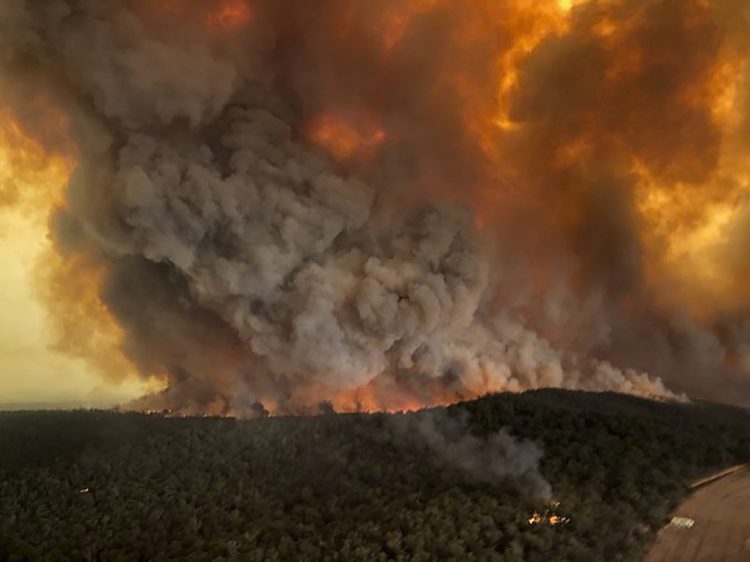Australia is on fire. Not all of it — but so far, flames have engulfed some 12 million acres, more than the land mass of Vermont and New Hampshire combined. Inhabitants of the hot, dry continent learned long ago that coping with wildfires is a part of life. But the conflagrations that have swept across large parts of Australia are unprecedented in their size and ferocity, with consequences that stagger the imagination.
Hundreds of homes have burned, and more than 140,000 people have been told to evacuate. More than two dozen have died. Some Australians have literally been driven into the sea, where they stood in the surf or sat on boats waiting for the flames to subside. Roads and highways have been closed, including one that connects the nation’s two largest cities, Sydney and Melbourne.
More than 1,000 residents of one coastal area had to be evacuated by ship. Hundreds of millions of animals are feared dead — and some species are likely to go extinct. “This is not a bush fire,” one government official said. “It’s an atomic bomb.”
It’s not a mystery why events like these have grown more common and more destructive: Global temperatures have crept upward. Last year is expected to rank as the planet’s second-hottest year on record, after 2016. Last July was the hottest month ever.
No individual weather episode can be definitively tied to global warming, but scientists agree it raises the frequency of extreme weather. The relentless buildup of carbon dioxide and other greenhouse gases has trapped heat and warmed the planet, with a vast array of harmful results. Oceans have risen. Polar ice is melting. Glaciers are shrinking. And land is burning.
The need for action to curb greenhouse gas emissions is urgent. But the Trump administration has gone the other way, pulling out of the Paris climate accord, scrapping the Obama administration’s Clean Power Plan and weakening rules on auto emissions. The head of the Environmental Protection Agency, Andrew Wheeler, is a former coal industry lobbyist.
There are steps to be taken to slow and eventually reverse the greenhouse gas accumulation: Use less coal, oil and natural gas. Encourage their replacement with solar, wind and nuclear power. Increase the fuel economy of cars and trucks, and expand the number of electric vehicles. Take available measures to capture carbon dioxide, and develop better ones.
A tax on carbon, which would raise the price of fossil fuels to reflect the damage they do, would stimulate all these advances. It would provide an advantage to the least expensive alternatives. Phased in over time, it would minimize economic disruption by giving businesses and individuals time to adjust. As a sign carried by one Australian evacuee said, “Inaction costs more.”
Editorial by the Chicago Tribune
Visit the Chicago Tribune at www.chicagotribune.com
Distributed by Tribune Content Agency, LLC.
Send questions/comments to the editors.



Comments are no longer available on this story